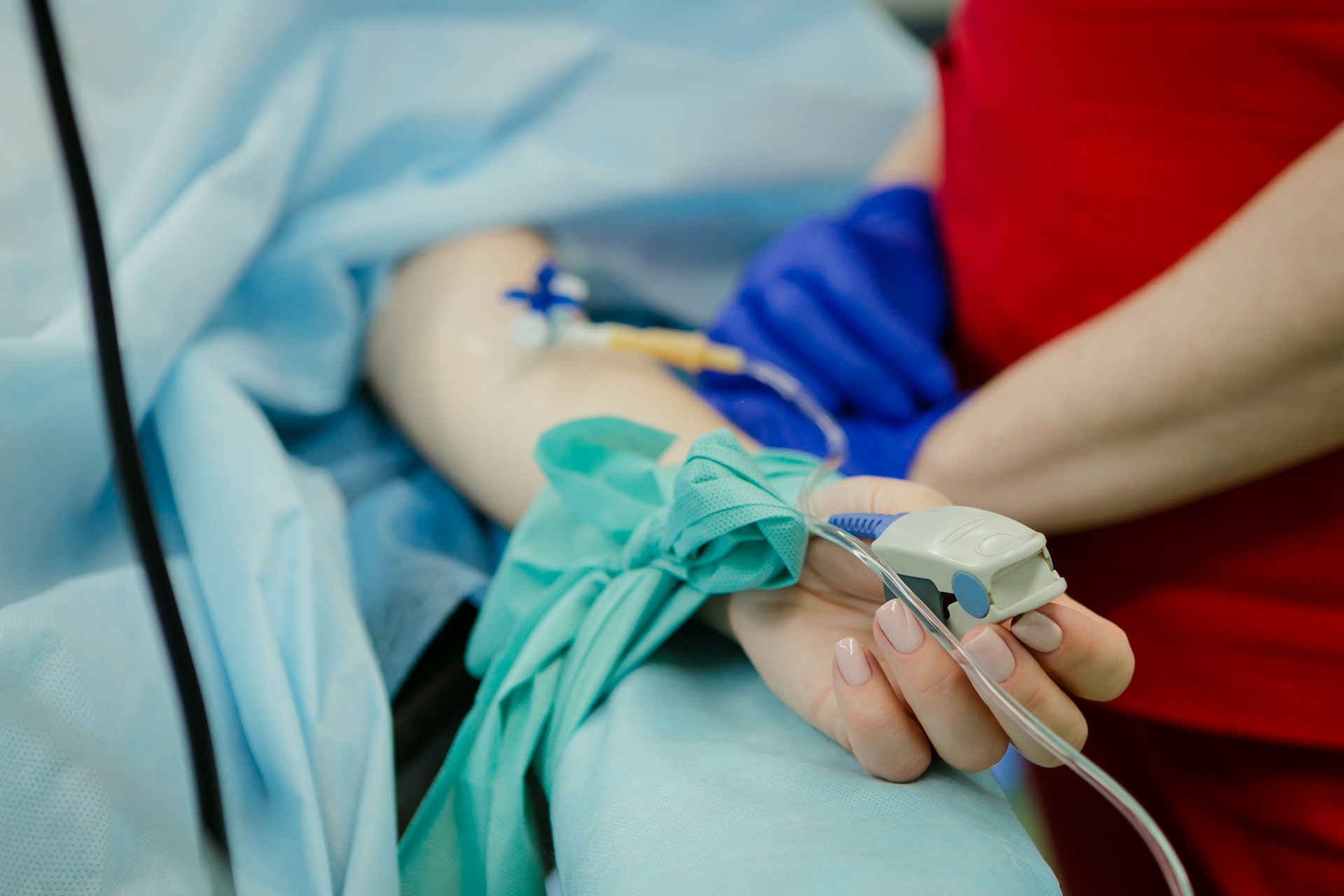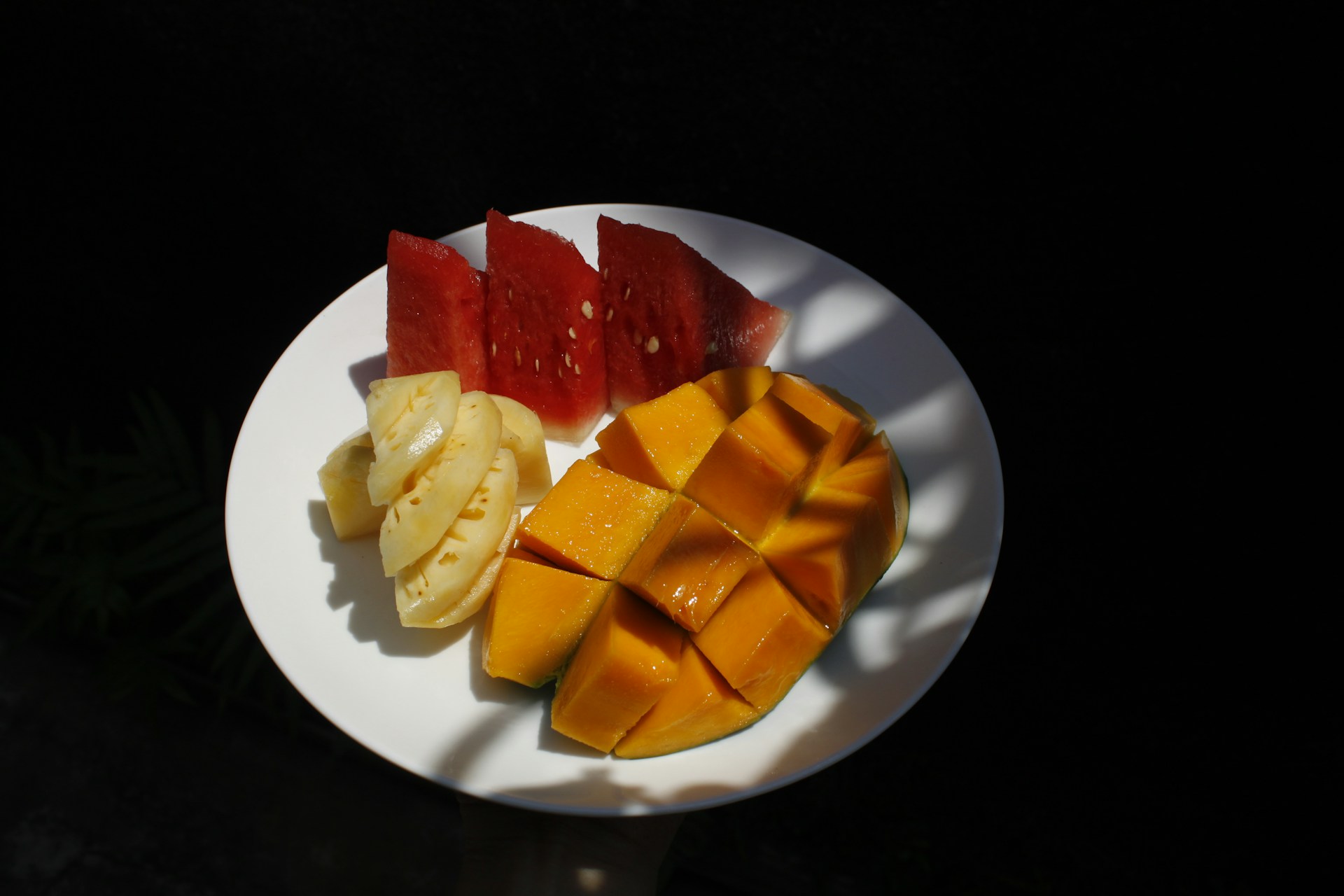The Association of Clean and Healthy Living Behavior along with Hemoglobin and Serum Ferritin Levels among Adolescent Girls
Hubungan Perilaku Hidup Bersih dan Sehat dengan Kadar Hemoglobin dan Feritin Serum pada Remaja Putri

Downloads
Background: Clean and healthy life behavior that is not appropriately implemented will cause various infectious diseases that trigger anemia. Islamic boarding schools have a significant role in instilling clean and healthy life behavior in students.
Objectives: This study aimed to analyze the relationship between pure and healthy life behavior with hemoglobin and serum ferritin. Hemoglobin and serum ferritin are indicators for diagnosing iron deficiency anemia.
Methods: The research design was a cross-sectional study conducted in January – February 2021 at the Al Falak Islamic Boarding School in Bogor. A total of 45 subjects were selected with inclusion criteria, namely students aged 12-20 years, in good health, and being in the dormitory during the study period, while the exclusion criteria were not being in the dormitory for more than two weeks. Anaemia data status was obtained by measuring hemoglobin and serum ferritin levels. Analysis of hemoglobin (Hb) levels used the Cyanmethemoglobin method, while the analysis of ferritin levels in serum samples used the Chemiluminescent Microparticle Immunoassay (CMIA) way. Analysis of the correlation between the dependent variable, namely hemoglobin and serum ferritin, and the independent variable, namely clean and healthy living behavior.
Results: Based on the hemoglobin value, 37.8% of the subjects had anemia, while based on the serum ferritin value, as much as 51.1% of the subjects had low iron status. Behavior related to personal hygiene, conduct related to washing hands, and behavior associated with the cleanliness of the subject's residence was classified as good, respectively, at 55.6%, 57.8%, and 44.4%. There was a correlation between personal hygiene-related behavior with hemoglobin (p= 0.042) (r=0.305) and serum ferritin (p= 0.036) (r=0.313).
Conclusions: Personal hygiene was related to hemoglobin and ferritin serum in adolescent girls due to maintaining a clean and healthy life in Islamic boarding schools, primarily associated with personal hygiene.
Diniz, CBC, Amanda, AF, Bruna, LMC, Samara, CG, Andre, LS, Aretha, FA, Jose, MXG, Hermes, MTB, Jose, LSR & Maryldes, LBO. Adolescent Nutrition Monitoring the Health Program in School. Journal of Human Growth and Development. 30, 32-39 (2020).
Abidin, DS, Roedi, I. & Windhu, P. Effect of Nutritional Status, Hemoglobin Levels and Psychosocial Emotional Behavior with Cognitive Function of Female Adolescents. Indian Journal of Public Health Research & Development. 11, 1040-1044 (2020).
Deshpande, NS, Devkinandan, K., Sharad, A. & Shishir, D. Prevalence of Anemia in Adolescent Girls and Its Co-Relation with Demographic Factors. International Journal of Medicine and Public Health. 3, 235-239 (2013).
World Health Organization. World Health Statistics. (2015) available from:www.who.int/nutrition. Retrieved 9 August 2020.
Stevens, GA, Mariel, MF, Luz, MDR, Christopher, JP, Seth, RF, Francesco, B., Juan, PPR, Zulfiqar, A, B. & Majid, E. Global, Regional, and National Trends in Hemoglobin Concentration and Prevalence of Total and Severe Anemia in Children and Pregnant and Non-Pregnant Women for 1995–2011: A Systematic Analysis of Population-Representative Data. Lancet Global Health. 1, e16-25 (2013).
Center for Health Research and Development of Indonesia. 2018 Basic Health Research Results Report. Jakarta: Balitbangkes, 2018
Camaschella, C. New Insights into Iron Deficiency and Iron Deficiency Anemia. Blood Reviews. 31, 225-233 (2017).
Jimenez, K., Stefanie, KD & Christoph, G. Management of Iron Deficiency Anemia. Gastroenterology & Hepatology. 11, 241-250 (2015).
Devi, R., Jaysree, TM, John, WFA & Ethirajan, N. Prevalence of Anemia among Children Age 10 to 15 Years in Urban Areas, Chidambaram. Journal of Drug Discovery and Therapeutics. 2, 67-70 (2014).
Manna, PK & Debidas G. Prevalence of Anemia among Adolescent Girls and Adult Women from Tea Garden Areas of Darjeeling and Jalpaiguri Districts of West Bengal. Journal of Life Sciences. 6, 33-39 (2017).
Baranwal, A., Baranwal, A. & Roy, N. Association of Household Environment and Prevalence of Anemia Among Children Under-5 in India. Frontiers in Public Health. 1, 1-7 (2014).
The Ministry of Health of Indonesia 2011. Guidelines for fostering clean and healthy living behavior (PHBS). Jakarta: RI Ministry of Health 2011.
Syukri, S. Description of Knowledge and Behavior of Santri Regarding Personal Hygiene and Residence at Islamic Boarding School X in Bogor Regency. (Sharif Hidayatullah State Islamic University, 2017).
Gibson, RS Principles of Nutritional Assessment 2nd Edition. (Oxford University Press, 2005)
Faatih, M., Kambang, S., Ida, S., Ratih, RP, Frans, D. & Ully, AN. Use of Hemoglobin Measuring Devices in Puskesmas, Polindes and Pustu. Journal of Research and Development of Health Services. 1, 32-39 (2017).
Monks. 2009. Developmental Stages of Adolescence. Medical Journal New Jersey Muagman, 1980. Jakarta: Raja Grafindo.
Lalangpuling, IE Prevalence of Helminthiasis and Its Relationship With PHBS in School Children in The Working Area of the Ranomut Health Center, Manado City. Journal of Analyst Medika Biosains. 7, 26-33 (2020).
Listiana A. Analysis of the Factors Associated with the Incidence of Iron Deficiency Anemia in Young Women at SMKN 1 Terbanggi Besar, Central Lampung. Health Journal. 7, 455-469 (2016)
Rianti, E., Agus, T., Ahmad, R. & Elina. Enhancing Health Quality of Islamic Boarding School Students through Hygiene Practices in Depok and Banten, Indonesia. Indian Journal of Forensic Medicine & Toxicology. 13, 1661-1667 (2019).
Gabur, MGJ, Atti, Y & Novita, D. The Relationship between Clean and Healthy Living Behavior (PHBS) on the Personal Hygiene of School-Age Children at SDN Tlogomas 2 Malang. Nursing News. 2, 533-542 (2017).
Balasubramanian, N. Perception of Adolescence on a Healthy Lifestyle and Factors Contributing to Health And Its Barriers: Grounded Theory Approach. Asian J. Nursing Edu and Research. 7, 1-5 (2017).
Indonesian Ministry of Health. Guide to Hand Washing with Soap. (2020) available from: https://kesmas.kemkes.go.id/assets/upload/dir_519d41d8cd98f00/files/Panduan_CTPS2020_1636.pdf. Retrieved March 7, 2021
Ejemot, NRI, Ehiri, JE, Arikpo, D., Meremikwu., MM & Critchley, JA Handwashing Promotion for Preventing Diarrhea. Cochrane Database of Systematic Reviews. 1. Art. Number : CD004265 (2021).
Alwis, WRD, Premalatha, P., Lum, WS & Evelyn, CX A Study on Hand Contamination and Hand Washing Practices Among Medical Students. ISRN Public Health. 2012(251483), 1-5 (2012).
Sari, RP Insight into Environmental Hygiene and Diversity; Environmental Hygiene Practices in the Academic Community of UIN Imam Bonjol Padang. Indonesian Journal of Religion and Society. 1, 80-92 (2019).
Ali, U., Iftekhar, Y., Syed, HD, Farah, A & Wafa, H. Worm Infestation and Associated Factors in School Children of Zhob District, Balochistan, Pakistan. Mr J Physiol. 12, 18-21 (2016).
Ozdemir, N. Iron Deficiency Anemia from Diagnosis to Treatment in Children. Turk Pediatric Archives. 50, 11–19 (2015).
Matthew, W. & Jason, ED Iron Deficiency Anemia: Evaluation and Management. Am Fam Physician. 87, 98-104 (2013)
Hamidiyah, A., Lutfiatur, R. & Nurul, AZ. The Determinants of Anemia in Female Students. Obstetric Oxytocin. 6, 64-72 (2019).
Dumilah, PRA & Sri S. The Relationship between Anemia and Student Learning Achievement at Bina Insani Superior Middle School. Amerta Nutr. 1, 331-340 (2017).
Adelman, S., Daniel, OG & Joseph, KL & Harold, A. School Feeding Reduces Anemia Prevalence in Adolescent Girls and other Vulnerable Household Members in a Cluster Randomized Controlled Trial in Uganda. The Journal of Nutrition. 149, 659–666 (2018).
Chaturvedi, D., Partha, KC, Priyanka. & Anil, KC Study of Correlation Between Dietary Habits and Anemia Among Adolescent Girls in Ranchi and Its Surrounding Area. International Journal of Contemporary Pediatrics. 4, 1165-1168 (2017).
Kulkarni, MV, PM, Durge. &NB, Kasturwar. Prevalence of Anemia among Adolescent Girls in an Urban Slum. National Journal of Community Medicine. 3, 108-110 (2012).
Pradanti, CM, Wulandari, M. & Hapsari, SK The Relationship Between Intake of Iron (fe) and Vitamin C with Hemoglobin Levels in Grade VIII Students at SMP Negeri 3 Brebes. Journal of Nutrition Muhammadiyah University of Semarang. 4, 4-29 (2015).
Ekorinawati W. 2010. The Relationship between Iron Intake and Hemoglobin Levels and Ferritin Levels in Children Aged 6 to 24 Months at the Surakarta Kratonan Health Center. [Essay]. Surakarta: Muhammadiyah University of Surakarta.
Arima, LAT, Etisa, AM & Hartanti, SW Correlation between Intake of Heme Iron, Non-Heme Iron and Menstrual Phase with Serum Ferritin in Female Adolescents. Journal of Nutrition College. 8, 87-94 (2019).
Thomas, D., Jagdish, C., Sunita, S., Anju, J & Harish, KP Determinants of Nutritional Anemia in Adolescents. Indian J Pediatr. 52, 867–869 (2015).
Subramaniam, G. & Meenakshi, G. Iron Deficiency Anemia in Children. Indian J Pediatr. 82, 558–564 (2014).
Fathonah, S., Rosidah & Sarwi. Nutritional Adequacy Level of Snack toward Nutritional Status of Early Childhood. Greener Journal of Epidemiology and Public Health. 2, 037-044 (2014).
Zakiudin, A. & Zahroh, S. The personal hygiene Behavior of Students in Islamic Boarding Schools in The Brebes District will be Realized if Supported by the Availability of Infrastructure. Journal of Indonesian Health Promotion. 11, 64- 83 (2016).
Mahmud, MA, Mark S., Afework, MB, Ignacio, LP, Geert, JD, & Roman, BV Efficacy of Handwashing with Soap and Nail Clipping on Intestinal Parasitic Infections in School-Aged Children: A Factorial Cluster Randomized Controlled Trial. PLoS Med. 12, e1001837 (2015).
Banu, H., Hamida, K. & Anwar, HM Relationships between Anemia and Parasitic Infections in Adolescent Girls of Bangladesh. Bangladesh J. Zool. 42, 91-103 (2014).
Korpe, PS & William, APJ Environmental Enteropathy: Critical Implications of a Poorly Understood Condition. Trends in Molecular Medicine. 18, 328-336 (2012).
Prentice, AM, Amat, B., Momodou, WJ, Amadou, TJ, Saikou, S., Ebrima, AS, Kabiru, C., Ebrima, D., Andrew, EA, Sant, RP, Hal, D., Miriam ., W., Kessler., Carla, C. & Rita, W. Respiratory Infections Drive Hepcidin-Mediated Blockade of Iron Absorption Leading to Iron Deficiency Anemia in African Children. Science Advances. 5, eaav9020 (2019).
Fattah, N., Arina, FA, Santriani, H. & Fathul, RSI The Relationship between Personal Hygiene and Environmental Sanitation with the Incidence Of Helminthiasis. UMI Medical Journal. 5, 47-55 (2020).
Dewi, NLGDR & Dewa, AASL The Relationship between Personal Hygiene and School Sanitation Behavior with Soil-Transmitted Helminths Infection in Class III-VI Students of Public Elementary School no. 5 Delod Peken Tabanan 2014. Udayana Medika E-Journal. 6, 1-4 (2017).
World Health Organization. C-reactive Protein Concentrations as A Marker of Inflammation or Infection for Interpretationbiomarkers of Micronutrient Status. (2014) available from: https://apps.who.int/iris/bitstream/handle/10665/133708/WHO_NMH_NHD_EPG_14.7_eng.pdf?sequence=1&isAllowed=y. Retrieved March 20, 2021.
Aryadnyani, NP, Dewi, I. & Fauzia, U. Hemoglobin Levels on Trichuris Trichiura Infection in Children. Medical Laboratory Technology Journal. 6, 78-83 (2020).
Ngure, FM, Brianna, MR, Jean, HH, Mduduzi, NM, Gretel, P & Rebecca, JS. Water, Sanitation, and Hygiene (WASH), Environmental Enteropathy, Nutrition, and Early Child Development: Making the Links. Ann. NY Acad. sci. 1308, 118–128 (2014).
Abdulsalam, M. & Albert, D. Diagnosis, Treatment and Prevention of Iron Deficiency Anemia. Sari Pediatrics. 4, 74-77 (2002).
Copyright (c) 2023 Amerta Nutrition

This work is licensed under a Creative Commons Attribution-ShareAlike 4.0 International License.
AMERTA NUTR by Unair is licensed under a Creative Commons Attribution-ShareAlike 4.0 International License.
1. The journal allows the author to hold the copyright of the article without restrictions.
2. The journal allows the author(s) to retain publishing rights without restrictions
3. The legal formal aspect of journal publication accessibility refers to Creative Commons Attribution Share-Alike (CC BY-SA).
4. The Creative Commons Attribution Share-Alike (CC BY-SA) license allows re-distribution and re-use of a licensed work on the conditions that the creator is appropriately credited and that any derivative work is made available under "the same, similar or a compatible license”. Other than the conditions mentioned above, the editorial board is not responsible for copyright violation.












































